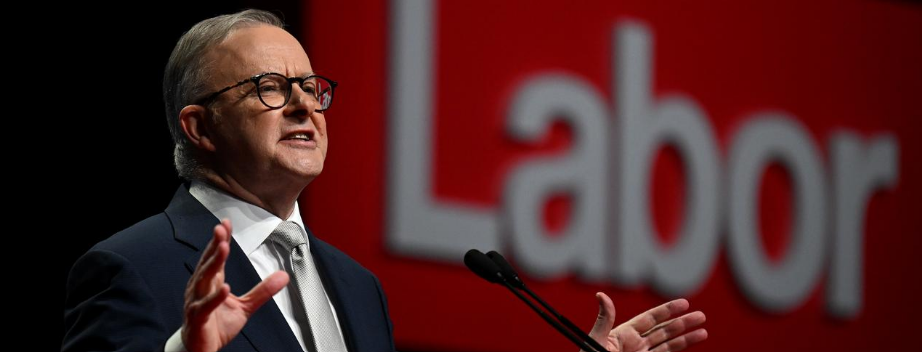On Thursday 24 August 2023, Treasurer the Hon Dr Jim Chalmers MP launched the sixth Intergenerational Report (IGR), giving Australia insight into the economic and societal trends that are predicted to shape our nation’s future and influence the direction of government.
What is an Intergenerational Report?
An Intergenerational Report is a document released by the Federal Government usually every five years, with five released so far (2002, 2007, 2010, 2015 and 2021).
These reports outline the projected outlook of the Australian economy and federal budgets over the next 40 years. The reports focus on the nation’s demographics, productivity, workforce participation issues, and other structural trends that will shape Australia’s public policy for the coming decades.
Why does Australia need an Intergenerational Report?
Former Federal Treasurer the Hon Peter Costello AC introduced the Intergenerational Report to give clarity around the long-term pressures facing the federal budget. Intergenerational Reports give politicians and voters insight into persisting issues facing the nation and how these will impact Australia holistically.
The 2023 Report’s purpose is to help Australia understand and adapt to forecasted challenges that will change our economy and society.
Why is the Treasurer releasing the Intergenerational Report now?
Treasurer Chalmers decided to release a Report only two years after the last IGR, despite only being required to release a report every five years.
The timing of the Report’s release can be attributed to the timeframe of the Government’s economic updates, and this is the first Report released by the Albanese Government. With the 2023-24 Federal Budget released in May and the Mid-Year Economic and Financial Update (MYEFO) scheduled for October or November this year, the IGR provides a guide for the Government’s funding allocation and policy development.
The Albanese Government has also been highly invested in addressing social issues and utilising an integrated approach to policy. For example, on 21 July 2023, the Albanese Government released the Measuring What Matters Statement, the first iteration of Australia’s national wellbeing framework to track the collective cohesion and prosperity of the nation alongside the more traditional methods of measuring the economy.
This decision to bring the IGR forward illustrates the Government’s desire to be transparent and realistic about the state of the nation, to preface upcoming financial outcomes, and to better prepare the public for future trends.
What does the 2023 Intergenerational Report say?
In a press conference on Monday 21 August, Treasurer Chalmers stated that the 2023 IGR is intended to build our understanding of what he calls the ‘Five Big Shifts’. These ‘shifts’ are trends that are already underway in Australia’s society and economy that will have a significant impact on the Government’s forward planning. These include:
- Shift from globalisation to fragmentation
- Shift from hydrocarbons to renewables
- Shift from IT to artificial intelligence
- Shift from a younger demographic to an older population
- Shift in the industrial base to a larger role for the care economy
With the release of the 2023 Intergenerational Report on Thursday 24 August, the Nexus team has compiled key themes and data highlighted by Treasurer Chalmers during his address at the National Press Club.
Treasurer Chalmers has stated that the Government has made the IGR ‘a significant part of our efforts to revitalise policy thinking, renovate our institutions, and focus on our big national challenges and chances. This IGR sets out the choices that will determine whether we succeed or fail in the years ahead – It sends a pretty clear and compelling message: We can own the future. But only if we take the big shifts seriously.’
Population:
- The IGR forecasts a slow growth in population and an increasing older demographic by 2063.
- The Report predicts that the population will grow by around 50% and reach 40.5 million people in the next 40 years.
- The number of people aged 85 and over will triple and the number of people aged 65 and over is likely to double.
Government Spending:
- The Australian economy is expected to be 2.5 times larger in 2063 and an ageing and growing population could drive up federal government spending in the coming decades.
- Government investment in the areas of Health, Aged Care, Defence, and Interest Payments on Debt is set to rise $140 billion by 2062–63.
- The care economy is also likely to account for 15% of GDP by 2063, up from 8% in 2023.
‘People will live longer and healthier lives. Moving from a younger to an older population is something we’ve known about for some time now – and it’s true that this will put a strain on our Budget. In fact, around 40 percent of the projected increase in spending that’s outlined in the IGR is due to us getting older. But this will come with a chance to transform our industries in the right way.’
Critical Minerals:
- Australia is the largest producer of lithium, a raw material that is essential to producing renewables like solar panels, wind turbines, and electric vehicles as well as batteries, phones, and laptops.
- Australia’s export of lithium is estimated to be eight times higher by 2063 while the demand for Australia’s export of thermal coal is estimated to reduce by 50%.
- The demand for other critical minerals like nickel, zinc and bauxite could increase by 350% by 2040.
‘The composition of our industrial base will be changed by energy, by technology and by demography. Demand for critical minerals will explode, the opportunity of the century – To mine, refine and manufacture them. But it’s also increasingly about the care and support economy.’
Climate Change:
The Government has revealed the consequences of increasing global temperatures.
- If the temperature increases by more than 2 degrees Celsius, agricultural crop yields will be reduced by 4% by 2063 and decrease labor productivity which would severely impact Australia’s economic output.
- Climate Change in the next four decades could cost the Australian economy $135 – 243 billion dollars.
‘Dealing with climate change is a global environmental and economic imperative. The IGR makes clear the costs that could come with rising temperatures, the impact on specific sectors like agriculture and tourism, and the vast scale of investment needed to respond – some additional $225 billion, to decarbonise heavy industries and transition our energy system. These are not only risks to manage, costs to bear, but vast industrial opportunities.’
Nexus will continue to monitor the impact of the 2023 Intergenerational Report on the Government’s future policies and budget allocations. You can find the full report here. Please reach out to the Nexus team if you would like any further information.
Also, if you missed Nexus’ update on the last Intergenerational Report in 2021, you can view our insights here.
Latest posts by Nexus APAC (see all)
- United Kingdom General Election 2024: An Overview - April 15, 2024
- Australian Voters Go to the Polls - February 26, 2024
- Secretaries of Federal Departments – An Overview - February 1, 2024



